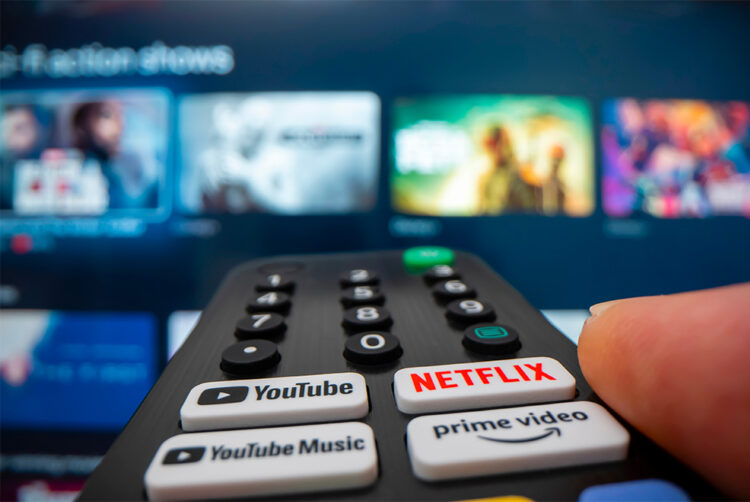Why Barb will keep brand safety standards baked into ‘fit-for-TV’ model

Opinion
Barb CEO: We will report content on video-sharing platforms in a way that provides consistent indicators of quality across all the media services we measure.
Last autumn, Barb commissioned an industry-wide consultation. Our goal was to establish a point of view on how we extend our industry’s standard measurement of what people watch to embrace quality content on video-sharing platforms such as TikTok and YouTube.
We should start by recognising quality is ultimately in the eye of the beholder. Buyers of advertising want to judge the attraction of content across the whole range of linear and streaming services that are available to their target audiences. In this context, can we establish a workable definition that allows the equitable comparison of viewing environments across all platforms?
One clear message from our consultation is that there is a demand-side consensus on the value of content produced to certain standards. Another is that value judgements made by these users of our audience data need to be informed by the nature of the content and contextual factors that influence the viewing experience.
Our consultation wasn’t an academic exercise. It was designed to help us define the next evolution in our industry’s standard measurement of what people watch.
Barb always has been and always will be guided by the stated needs and expectations of all corners of the industry — agencies, advertisers, broadcasters and platforms. We find ways to balance that spectrum of perspectives by creating measures trusted by all, aligned behind shared principles of objectivity and transparency. With this approach, Barb has become synonymous with trusted insight — both into who and how many people are watching and also the context of the viewing experience.
As a result of constant innovation, we expanded our definition of Total Viewing in 2021 to include streaming services such as Disney+, Netflix, TikTok and YouTube. Each day, we provide our industry with insight on how many people are watching the streamers, and for how long. We’ve also mastered the reporting of audiences to shows on SVOD services and these content ratings have entered the cultural currency.
Towards the end of last year, our definitive audience data featured in extensive commentary around Netflix’s documentary — Harry & Meghan. During the recent holiday season, Daniel Craig’s appearance in Glass Onion: A Knives Out Mystery grabbed headlines as a big winner, while publications ranging from the Daily Mail to the Farmers Guardian have used our ratings in recent weeks to report on the success of Clarkson’s Farm on Amazon Prime Video.
Evolving into video-sharing platforms
Having opened these doors into walled-garden platforms, the natural next step in Barb’s inclusive measurement strategy is to focus on the content people watch on video-sharing platforms. Yet it is also, innately, a more challenging step.
Statista reports that as of June 2022, 500 hours of video were being uploaded to YouTube every minute. Using the latest season of Stranger Things as a benchmark, that’s equivalent to 39 drama series. And to state the obvious, the range of quality being uploaded is also vast.
The impracticality of measuring all of this leads to the question of which content do buyers of advertising want to prioritise. To answer this, we conducted in-depth interviews with nearly 40 businesses, with the vast majority being advertisers and media agencies.
We put forward a working definition that reflected principles and language in legal frameworks, such as the EU Audio-Visual Media Services Directive. This starting point also resonated with a seminal speech made by Marc Pritchard, chief marketing officer of Procter & Gamble, in which he articulated expectations of minimum standards. He pointed to the importance of responsible editorial control over the quality of content, as well as investing in places where brands are proven safe and where the content is known.
So how did the industry react?
The value of content quality
There is a near-universal appreciation of the definition and role of content quality.
Inherent to this definition are the value of — and the values attributed to — the investment made in production. And it’s not just investment as measured by the production budget. Importance is given to editorial input and oversight, while regulatory compliance — or an intention to deliver in the spirit of regulation — is also emphasised. And yes: the content has to be safe and suitable for advertisers.
There is also consensus that how the content is distributed and watched shouldn’t be a determining factor. Any definition should be agnostic of device and platform, as well as embracing all services regardless of the content-producer’s business model. It should be an audience-centric definition.
Podcast: BARB CEO Justin Sampson on the future of TV measurement
Reflecting on this feedback from advertisers and agencies, we’ve established that fit-for-TV provides a benchmark of quality that has the substantial backing of the industry. And fit-for-TV content provides buyers with a definition that’s consistent with other commercial television environments.
Equally, Barb recognises some advertisers invest in video content that doesn’t meet this definition. They want to follow audiences into any safe and suitable user-generated content. So our response is not just an intent to measure and report fit-for-TV content, but also content that adheres — at a minimum — to industry-accepted levels of brand safety.
Context matters, too
The consultation also revealed demand-side consensus around the importance of contextual measures of quality.
Any reporting of content on video-sharing platforms should enable advertisers and agencies to make value judgments about quality based on the context of the viewing experience. Among other things, these include details about the screen being used, the orientation of the screen, whether the sound is on and how long the content is watched for.
Surfacing these insights — alongside apples-with-apples metrics for the volume of viewing — provides buyers of advertising with the information they need to make value judgements that are at the heart of investment decisions.
And this is not just Barb’s reading of the situation. The findings from our consultation chime with audience-measurement principles articulated by the World Federation of Advertisers. These set out that cross-media context and editorial measurement are important components for media-planning purposes and should form part of the measurement scope.
Barb has been doing this for many years with trusted viewing figures that are baked into the process of determining marketing effectiveness. We’re now ready to meet the needs of the industry to report content on video-sharing platforms in a way that provides consistent indicators of quality across all the media services we measure.
And we’re not starting with a blank sheet of paper. We already report viewing to content distributed by broadcasters through YouTube. This includes 15 live-stream channels, around 1,000 hours of archive Channel 4 content and live events such as BT Sport’s coverage of the Champions League Final.
As we continue to innovate and evolve, we welcome the active participation of businesses that make content and the platforms that distribute what people want to watch. Only with their involvement can we comprehensively classify content the industry wants Barb to measure.
And, as ever, we will rely on joint-industry principles that ensure buyers and sellers of advertising have equal access to objective and impartial audience data, collected through transparent and rigorous methodologies.
 Justin Sampson is chief executive of Barb
Justin Sampson is chief executive of Barb




